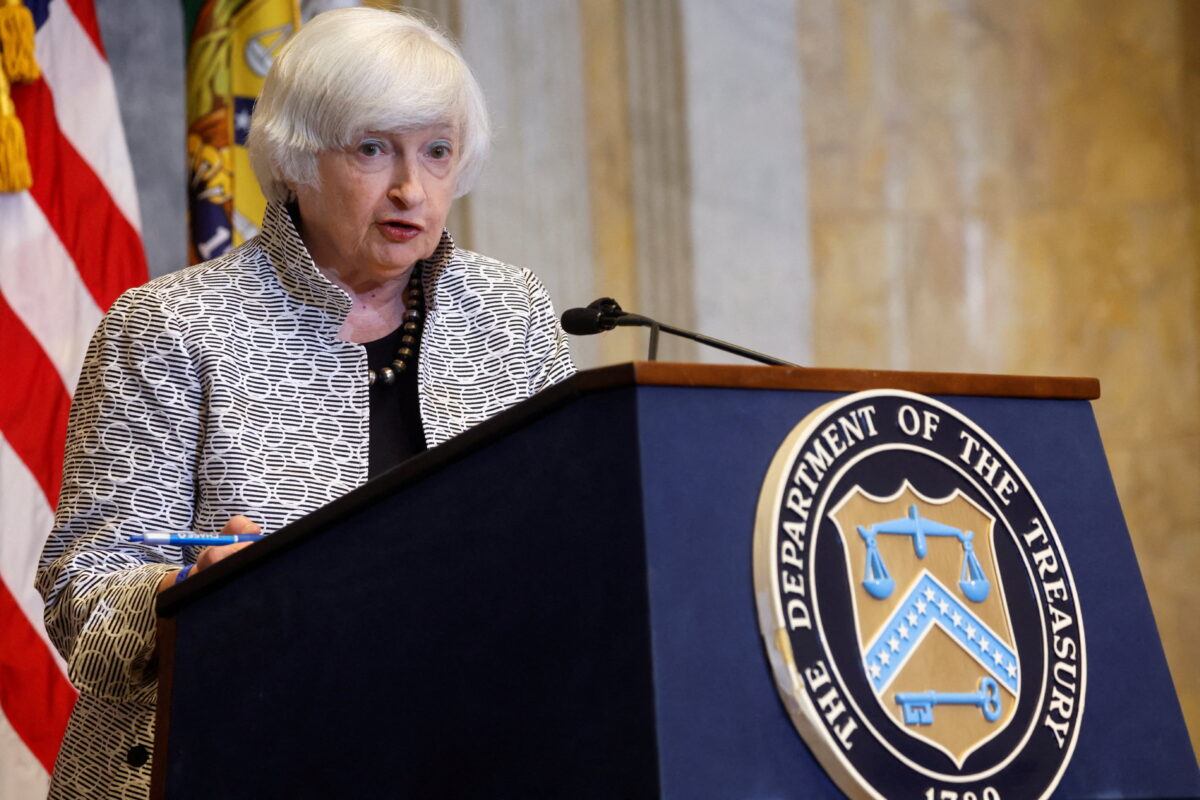


Commentary
Every few years, Washington approaches a debt ceiling limit, and worries of default multiply. Theoretically, default is possible, but practically speaking, it is never a real possibility. Even in an extended government shutdown, Washington has resources that will allow it to meet principal and interest payments.
In this matter, it is critical to realize that Washington has always and will always prioritize its debt obligations. Whatever politicians say about the primacy of programs near and dear to the hearts of important constituencies, they know that the stability of the government, the financial system, and hence on, the economy depends on meeting the government’s debt obligations.
In the 234 years since Alexander Hamilton established the reliability of federal debt as the lynchpin of American finance, Washington has never missed an interest or principal payment. Even in the most trying times—such as the Great Depression, the Civil War, or the Second World War—it has always paid in full and on time. It is not likely to give way now because of a congressional impasse.
Even apart from this powerful historical evidence, Washington has several means to meet its obligations even if Congress balks for a while at raising the debt ceiling. Treasury Secretary Janet Yellen all but admitted this only recently. After first engaging in needlessly inflammatory remarks of a global financial collapse, she then admitted that the Treasury has enough cash on hand to meet its obligations easily through June. Five months might not seem like a lot in the grand scheme of things, but no debt debate has ever lasted that long, and it otherwise provides a lot of wiggle room for Congress to arrive at a more lasting resolution of the matter.
Simple arithmetic also takes some of the edge off worries. If the Treasury issues debt to pay off a maturing bond, which incidentally is the way it proceeds generally, the outstanding amount of debt does not increase in the least. The maturing debt decreases the amount of debt outstanding, while the new debt issued to pay off the old bonds brings the total back up to where it was. On this basis, there is no difficulty making good on principal payments even if the nation finds itself up against a legal debt limit.
Of course, such calculations do not consider interest payments or the need for more debt to support an expanding government. These could push the total over the limit. In this situation, Washington can reallocate funds from one presumably less vital activity to other more vital activities, such as making good on its interest obligations. Politicians will argue endlessly about what is essential. In the past, they have decided that they can close national parks, for example, and furlough thousands of federal administrative personnel to free cash with which to pay interest on the debt and also to make Social Security payments. Some citizens are inconvenienced, and some suffer hardship, but when Congress reaches a compromise on raising the debt ceiling, as it inevitably always does, services are restored, and the furloughed workers receive back pay.
Another possibility, though never before used, is to tap the Federal Reserve’s huge portfolio of Treasury debt. According to the Fed’s own accounting, it holds some $5.2 trillion in Treasury debt. That is almost a full year of federal spending. In a pinch, the Fed could simply forgive all or some of this debt. That might seem like a drastic move, but since for practical purposes the Fed is part of the federal government, such an act would amount to little more than moving money from one pocket to another. Ultimately, such a use of these funds could have inflationary effects, but that matter is separate from default.
If the history of debt ceiling debates is any guide, Washington will not likely need to resort to such extreme measures. The longest such problems have persisted can be measured in weeks rather than months. The sequence of events is always the same. It goes like this: The Treasury secretary—whether Republican or Democrat—points out the debt ceiling constraint and attaches some ominous language around what will happen if the ceiling is not lifted immediately. Yellen has already delivered these lines in the drama. Media outlets enlarge on the fears expressed by the secretary. That part of the play is presently being enacted. Holdouts in Congress refuse to compromise.
Once, however, the political winds make it plain who will get the blame for the disruption, Congress quickly manages a “bipartisan” compromise that lifts the ceiling before the need for extreme measures, much less default. That is the likely path over the next few weeks.
Views expressed in this article are the opinions of the author and do not necessarily reflect the views of The Epoch Times.
